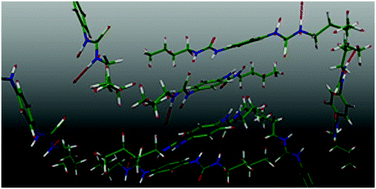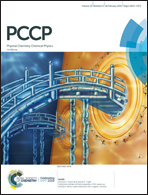Infrared and Raman spectroscopy of non-conventional hydrogen bonding between N,N′-disubstituted urea and thiourea groups: a combined experimental and theoretical investigation†
Abstract
The variety of H bond (HB) interactions is a source of inspiration for bottom-up molecular engineering through self-aggregation. Non-conventional intermolecular HBs between N,N′-disubstituted urea and thiourea are studied in detail by vibrational spectroscopies and ab initio calculations. Raman and IR mode assignments are given. We show that it is possible to study selectively the different intermolecular bifurcated intra- and inter-dimer HBs with the two types of HB acceptors. Through the ab initio calculation, the thioamide I mode, a specific marker of N–H⋯S![[double bond, length as m-dash]](https://www.rsc.org/images/entities/char_e001.gif) C HB interactions, is unambiguously identified.
C HB interactions, is unambiguously identified.



 Please wait while we load your content...
Please wait while we load your content...